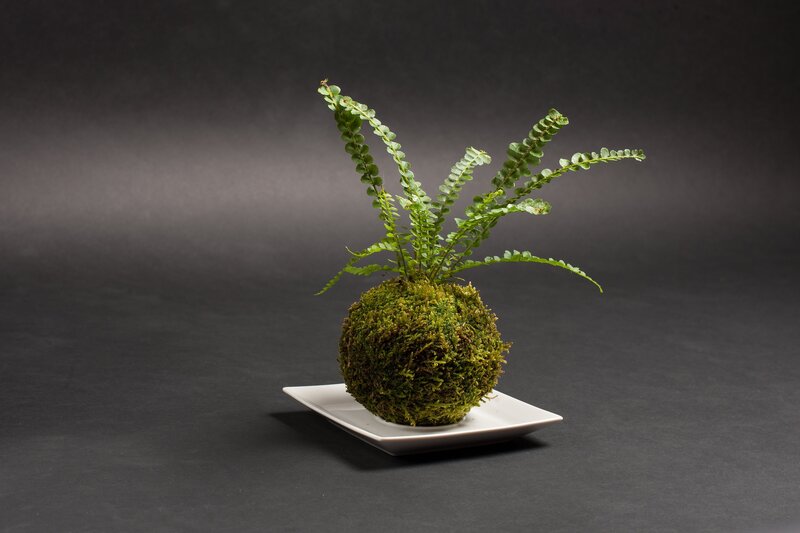How to Craft a Stunning Moveable Garden with Three Pro Gardening Tips
Are you dreaming of a vibrant, versatile garden that can travel with you, redefine your space, or maximize a small outdoor area? A movable garden--often called a portable or mobile garden--is your creative, flexible solution! Whether you want to brighten up a balcony, jazz up your patio, or have flexibility to shift your green oasis as seasons change, mastering the art of creating a stunning moveable garden unlocks limitless possibilities.
In this comprehensive guide, you'll discover how to start a moveable garden, what essentials to consider, and the best professional tips to help your portable garden thrive and dazzle. Let's dig in to building your own mobile plant paradise!
What Is a Moveable Garden?
A moveable garden is a collection of plants grown in containers, planters, or mobile raised beds that are designed to be relocated as needed. Unlike traditional in-ground gardens, these flexible creations allow you to adapt your greenery to changing sunlight, seasonality, weather, and even your mood or decor.
- Balcony gardens with rolling planters or hanging baskets
- Patio or rooftop gardens on caster-equipped plant stands
- Portable herb gardens in stackable crates or wooden boxes
- Window box vegetable gardens that move with the sun
Portable gardening is perfect for renters, urban dwellers, or anyone seeking flexibility and creative control over their green space.

Why Choose a Portable or Mobile Garden?
- Maximize sunlight: Move garden containers to catch the best light throughout the day or season.
- Protect in bad weather: Easily shift plants indoors, to a sheltered spot, or out of strong winds and frost.
- Redefine your space: Instantly change your landscape's layout for outdoor parties, special events, or a new look.
- Grow anywhere: Even if you only have a rented patio, balcony, or temporary space, you can grow a lush garden you can take with you.
- Minimize pests and disease: Isolate a troubled plant or rearrange groupings for better air flow and pest management.
Whether you want a stylish mobile flower garden or a practical, productive edible patch, a movable garden adapts beautifully to your needs.
How to Start Crafting a Stunning Moveable Garden
Ready to get gardening? Follow this step-by-step guide to build a beautiful, functional, and thriving portable garden. Along the way, we'll share three pro gardening tips guaranteed to elevate your results!
Step 1: Plan Your Moveable Garden Design
A stunning portable garden starts with thoughtful planning. Assess your available space, climate, and lifestyle needs. Ask yourself:
- How much sunlight does your space receive throughout the day?
- What kind of mobility do you need--lightweight pots for a balcony, wheelbarrow planters for a backyard, or rolling racks for a rooftop?
- What is your style? Modern, rustic, cottage-garden, edible-focused, or tropical retreat?
- What plants are suited to your region and amount of sunlight?
Sketch your layout or use gardening apps to visualize your design. Keep scale in mind: tall, narrow planters can maximize vertical space, while cascading baskets and bushy containers fill out the area beautifully.
Pro Gardening Tip #1: Choose the Right Containers and Mobility Solutions- Go lightweight: Select pots made from resin, recycled plastic, or lightweight ceramic. These materials are easier to move and withstand outdoor elements.
- Add wheels or feet: Attach sturdy casters under large planters or use rolling plant stands to maximize flexibility.
- Consider modular designs: Use stackable crates, shelves, or pallet gardens for maximum reconfigurability and space efficiency.
- Ensure good drainage: Drill adequate holes in containers to prevent root rot and improve plant health.
The right mobile gardening containers form the foundation for a truly moveable and successful garden.
Step 2: Select a Stunning Mix of Plants for Your Moveable Garden
Plant selection is the key to your garden's beauty and productivity. With portability in mind, opt for plants that thrive in containers and suit your climate and light availability.
- Herbs: Basil, parsley, mint, oregano, rosemary, and thyme
- Salad greens: Lettuce, spinach, arugula, and kale
- Compact vegetables: Tomatoes (dwarf types), peppers, radishes, and bush beans
- Flowers: Petunias, marigolds, pansies, begonias, and nasturtiums for color and pollinator appeal
- Dwarf shrubs and citrus: Lemon or lime trees, blueberries, or dwarf conifers (in large pots with wheels)
- Ornamental grasses and succulents: For a waterwise, contemporary feel
Consider grouping plants by needs: Sun-lovers together, shade-lovers together, and water-thirsty varieties kept separate from drought-tolerant species. This makes care and mobility easier!
Pro Gardening Tip #2: Mix Heights, Colors, and Textures for Visual ImpactA breathtaking moveable garden is a feast for the senses! Layer plants by their mature height--tallest at the back (or center of circular arrangements), medium-sized in the middle, and trailing or cascading species up front. Try these combos:
- Tall drama: Ornamental grasses or small fruit trees in the back
- Color splashes: Vibrant annuals and perennials mid-layer
- Trailing elegance: Ivy, sweet potato vines, or petunias tumbling over the container's edge
Combining textures, such as the bold leaves of a hosta with fine, feathery herbs, adds lushness and interest. Don't forget to rotate color schemes seasonally for a constantly fresh look.
Step 3: Master the Art of Caring for Your Portable Garden
Because containerized, moveable gardens have different needs than in-ground beds, proactive care is essential.
Watering Strategies:- Containers dry out faster than garden beds. Monitor soil moisture daily, especially in hot or windy weather.
- Install self-watering systems or use handy watering globes for periods when you're away.
- Water early in the morning to minimize evaporation and prevent mildew.
- Fertilize every 2-3 weeks with a balanced, water-soluble fertilizer for consistent blooms and lush foliage.
- Top-dress pots with compost or slow-release organic fertilizer to improve soil structure and nutrients.
- Periodically rotate containers to ensure even sunlight exposure.
- Check caster wheels or dolly supports for smooth mobility and safety--especially with heavier planters.
- Rearrange the garden seasonally for best aesthetics and to protect cold-sensitive plants in winter.
- Regularly inspect leaves for pests or signs of trouble. Isolate or move containers at the first sign of problem.
- Clean and disinfect pots between plantings to prevent disease build-up.
When horizontal space is limited, think vertically! Vertical moveable gardening options deliver beauty and bounty with minimal footprint.
- Install tiered plant stands with wheels for flowers, herbs, and vegetables.
- Hang baskets from sturdy hooks or wall-mounted brackets for cascading color.
- Use pocket planters or wall-mounted fabric panels to grow leafy greens or small flowers.
- Stack wooden crates or pallets for a rustic, modular look that goes anywhere.
Vertical elements pair beautifully with your portable garden's base containers and help you make the most of any space, no matter how tight!
Clever Portable Garden Arrangements for Every Setting
On a Balcony:- Pick lightweight, narrow pots; use railing planters; and opt for hanging baskets to save floor space.
- Choose compact, shallow-rooted plants like herbs, lettuce, and annual flowers.
- Use large troughs or wooden wheelbarrow planters on wheels for statement greenery.
- Sturdy rolling shelves or vertical stands amplify space and create privacy screens.
- Moveable carts with plant lighting are perfect for herbs, microgreens, and houseplants.
- Opt for decorative pots with saucers to protect flooring, and rotate trays for even growth.
Creative Garden Mobility Ideas
Want to take your moveable garden to the next level? Try these imaginative solutions:
- Reclaimed wheeled carts or wagons--Perfect for a whimsical, cottage look and easy mobility.
- Bar carts or baker's racks--Stylish, mobile staging for herbs or cocktail gardens.
- Hanging shoe organizers or felt pocket panels--Repurposed as lush, vertical herb gardens.
- Modular shelving on caster wheels--Create a customizable plant wall that can be moved with the sun.
- Upcycled bathtubs or troughs on wheels--Eye-catching and roomy for larger edibles or decorative shrubs.
How to Move Your Stunning Portable Garden Safely
Relocating your mobile garden can be as simple as rolling a cart, but take care to avoid stress or damage to your plants:
- Move early or late in the day when temperatures are cooler, reducing plant stress.
- Secure tall or top-heavy pots: Use bungee cords or sturdy rack sides to prevent tipping.
- Water lightly before moving: Overly wet pots are heavy, and roots can be jostled.
- Ease plants into new light conditions: Gradually acclimate them to sun or shade if relocating to a different microclimate.
With proper care, your moveable garden will flourish through each new arrangement or home!

FAQs About Moveable Gardens
Can I grow fruits and vegetables in portable gardens?Absolutely! Many fruits and veggies--including tomatoes, peppers, strawberries, dwarf citrus, salads, and root crops--thrive in containers. Just be sure to choose varieties suited to pot culture and provide sufficient depth and water.
How do I keep large mobile planters lightweight?Use lightweight potting mix, line the pot bottom with empty plastic bottles or polystyrene blocks to reduce soil volume, and select lightweight materials for both pot and supports.
How often should I fertilize portable garden plants?Most container-grown plants need feeding every 2-3 weeks during active growth, as nutrients wash out of pots more quickly than garden beds. Topsoil refreshment and compost additions also help.
Can I bring my mobile garden indoors in winter?Yes! Many smaller containers and portable racks can be shifted indoors for the winter months. Consider grow lights for sun-loving plants, and trim or repot as needed to accommodate indoor conditions.
Final Thoughts: Create Your Own Moveable Garden Masterpiece
From balconies and patios to urban rooftops and backyard nooks, crafting a stunning moveable garden is a rewarding, creative way to garden anywhere and everywhere. Choose smart containers, design with flair, and embrace mobility as you nurture a garden that can adapt to your life and style. With the three pro gardening tips covered--select the right containers, master color and height mixing, and use vertical techniques--you're set for vibrant, healthy, and utterly eye-catching portable greenery all year long.
Start small or go bold. Either way, your mobile garden can be endlessly customized and moved to make every season spectacular. Happy gardening!